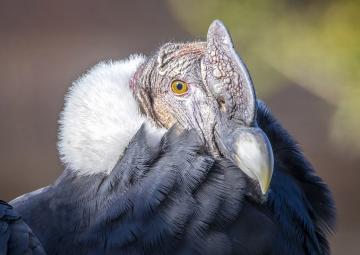THEORY
Targeting

Trainers use different techniques within the operant conditioning but, without a doubt, the targeting or use of the target, is one of the most known and used in animal training.
To put ourselves in context, we first need to know that targeting is the process of teaching an animal to touch or follow a target with some part of its body. Once this is known, the possibilities for training are endless.
When we condition our animal to the use of the target, we can start with a basic target such as our own hand. We must properly associate it with bridge and reinforce each time our animal touches us, mainly with the snout or nose, since it is usually with the part of the body with which the vast majority of species will approach, either to touch it out of curiosity or to sniff it out.
Once the animal understands that it will be reinforced every time it touches the target, we can start training to follow the target so we can move our animal in one direction or another. For this, we will have to increase the duration in which the animal keeps the snout at the target and we will begin to move it little by little ensuring that it follows. This will allow us to move our animal from a point A to a point B and will serve as a basis for training more complex behaviors such as a gating and even a weighing on a scale.
Some species are more fearful than others, and in early stages of training, condition them to follow a target to perform some of these behaviors, can be of great help to us to get the trust of the animal and that in turn stays focused on touching the target and not so much on the noise or alterations in the environment that may be.
If we continue with the process of targeting we will realize that the possibilities or scenarios in which we find ourselves are very diverse and, therefore, is where we must deploy our creativity as trainers.
The variety of targets in terms of size, textures, colors, shapes ... is very wide, so training our animal to perform targeting or stay in station in a particular place or point will be very useful in our day to day, especially if we want to train several animals at once.
For example, in a group of sea lions, before training with a specific animal, we can enter the facility and send all the animals to perform a target station to a specific area and choose a single animal while the rest remain in place until they hear the bridge.
In addition, this process can be of great use to desensitize (through active desensitization or counter-conditioning) certain objects that our animal may fear, such as: a veterinary case, a broom or even a toy. By reinforcing that it touches these objects as if it were a target, we will increase its confidence in the presence of these objects.
Sometimes, the use of the above techniques may not be enough and that is why we must go a step further and train with multiple targets. In this case, the criteria will not be that our animal touches only one target, but it will have to touch also a second and even a third target at the same time to hear the bridge.
This technique will be very useful in large or dangerous animals in which we will generally work with protected contact. For example, if we need to perform a blood draw on a tiger's tail, it would be very impractical to use our hand as a target to place the animal (as long as we want to keep our hand). For this reason, we will train not only the basic target with a long target pole, but we will also need a second target with which we will touch the hip to train the animal to position itself parallel to the fence of the enclosure.
We must not forget that the target is a tool to help in our training, but in advanced phases of behavior, its use should be gradually fading out. In this way, we have to condition a signal so that the animal positions itself or performs the desired behavior without the need to use the target as a guide.
In WeZooit we find a lot of advantages to train a target and its application to shape many behaviors. On the contrary, we see few disadvantages, as certain species tend to attack and bite foreign objects and it can be a challenge to condition it effectively.
Without a doubt, the target is a very useful tool in the training of most of the species we encounter, whether in domestic animals or in a zoo.
And remember, if it’s possible… WeZooit!


















